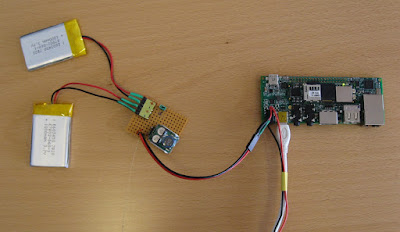A few closeup photos showing the eCAM32 3.2 megapixel camera mounted on top of the Gumstix Overo Water, mounted on the Tobi expansion board.
Gumstix Overo
Gumstix Overo Water + eCAM32 camera demo
 As promised in my last post, here is a quick demo of the eCAM32 3.2 megapixel camera connected to the Gumstix Overo Water. I am presenting two videos, one showing the setup where the eCAM32 camera board is mounted on top of the Gumstix Overo Water, the other one being a screen cast demonstrating some of the most common settings of the camera. I am using the Tobi expansion board because it has Ethernet interface allowing me to stream H.264 encoded video to a host PC running linux.
As promised in my last post, here is a quick demo of the eCAM32 3.2 megapixel camera connected to the Gumstix Overo Water. I am presenting two videos, one showing the setup where the eCAM32 camera board is mounted on top of the Gumstix Overo Water, the other one being a screen cast demonstrating some of the most common settings of the camera. I am using the Tobi expansion board because it has Ethernet interface allowing me to stream H.264 encoded video to a host PC running linux.
The e-CAM32 and e-CAM50 cameras
As I mentioned in my previous post, I had only had limited success with the Caspa VL and Logitech UVC cameras. While both cameras work with the Gumstix, the Caspa seems to take poor images while the Logitech USB camera performance is limited by low USB bandwidth. Therefore, I have decided to try my luck with cameras from e-Con Systems.
Video encoding using the DSP is working
I’m happy to report that I am now able to encode video on the Gumstix Overo Water using the DSP in the OMAP3530. It wasn’t difficult to make it work but it took several attempts at building the kernel before I got it right and, as you might know, cross compilation takes time.
Work continues on the OMAP3 VPU
A year has passed since we had a Gumstix Overo based video recorder onboard an amateur rocket and it is time to resume working on it. This time I will continue towards the original goal, namely live radio transmission of video encoded using the built-in DSP.
Gumstix OVero Fire and Tobi after the crash landing
![]() As I mentioned last week, the Gumstix Overo Fire COM and the Tobi expansion board looked surprisingly well after the crash landing of the failed rocket. Yesterday, I have had a chance to take a closer look at the boards and see what damage has occurred to them. Once I separated the two boards from each other it was obvious that the 70 pin AVX connectors were damaged on both board. The electrical connections on the Gumstix Overo Fire are still OK despite the damaged connector, but the Tobi board got damaged beyond repair (PCB tracks ripped off). Below you will find some close-up photos and a video about the damaged connectors.
As I mentioned last week, the Gumstix Overo Fire COM and the Tobi expansion board looked surprisingly well after the crash landing of the failed rocket. Yesterday, I have had a chance to take a closer look at the boards and see what damage has occurred to them. Once I separated the two boards from each other it was obvious that the 70 pin AVX connectors were damaged on both board. The electrical connections on the Gumstix Overo Fire are still OK despite the damaged connector, but the Tobi board got damaged beyond repair (PCB tracks ripped off). Below you will find some close-up photos and a video about the damaged connectors.
Successful flight and a crash landing
Oct 3, 2010 – Danish Space Challenge (DSC) held a Rocket Festival at Borris Sønderland, Denmark, where five rockets built by German and Danish students were launched together with one of DSC’s own rockets. For the first time, the DSC rocket was flying an Arduino Duemilanove based flight computer which was responsible for releasing the parachute. This worked well. The payload in the rocket consisted of the digital video recorder built by yours truly, based on the Gumstix Overo Fire embedded Linux computer that I have been blogging about during the last few weeks, see here.
Arduino flight computer
In this video Esben Rugbjerg is demonstrating his Arduino-based flight computer. The flight computer is controlling the igniter for parachute deployment during the descent. After the computer is armed it waits until it registers a large acceleration that corresponds to the launch. After 12 seconds it fires the igniter.
Rocket integration
Wednesday evening the Logitech Webcam Pro 9000 UVC camera and the Gumstix Overo Fire based video recorder have been integrated into the rocket. I will not have access to them before the launch day on Sunday. Shown below is the camera and video recorder integrated into the rocket.
Pre-flight mockup
Wednesday, the Gumstix Overo Fire-based video recorder was finally assembled and wired as it would go on the rocket.
